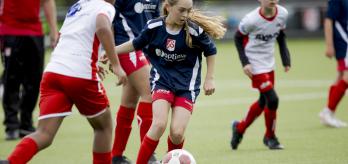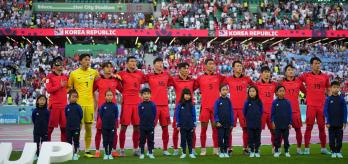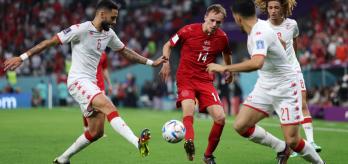One of the major hallmarks of the Dutch approach to grassroots football is its strong commitment to mixed football for players up to the age of twelve, with over 93% of the Netherlands’ 2,399 clubs being mixed. In this presentation, KNVB’s Senior Football Development Employee Roos Brouwer and former Football Development Employee, Elze Huls, explain how mixed football can develop youngsters as players and as people.
Good practice
- Systematic use of mixed football in younger age groups can make the game more inclusive and accessible to players at all levels of ability.
- Evidence suggests that playing in mixed teams nurtures more rounded individuals and develops better footballers.
- Providing specific guidance to coaches and practitioners can help to create a safe, inclusive environment for everyone involved in the game.
Watch presentation
Read summary
Part 1: The Dutch vision for grassroots football
Developing grassroots football is a major part of the KNVB’s current strategic plan, which runs until 2026. Its aims include future-proofing the Netherlands’ amateur clubs, growing the number of players, and creating a safe and welcoming football environment at every level of football. Mixed football plays a key role in all three of these areas by ensuring girls get the same opportunities to play as boys and that small clubs have enough players to be viable. The Dutch believe it also enhances the technical ability of youth footballers and develops their social skills.
Part 2: What the research says
This vision of mixed football is rooted in the KNVB’s own scientific research. There is evidence to indicate that mixed football brings wide-ranging benefits, including fostering a more inclusive football environment, breaking down gender stereotypes in society at large, and improving the quality of the grassroots game. Significantly, selecting players on the basis of ability rather than gender seems to make for more competitive matches, which is one reason why the KNVB supports elite female players to play in mixed teams for as long as they can.
Part 3: The Coaching Girls Module
Despite the KNVB’s groundbreaking approach to developing women’s football, its own research shows that a lot of clubs are not fully meeting the needs of female players. To address this, the association has drawn up specific guidance for practitioners working with women between the ages of 13 and 20, entitled the “Coaching Girls Module”. The material, which is arranged into 11 themes, is free to access and comes with accompanying worksheets to help coaches create a safe, inclusive environment for young female footballers.
Q&A
00:37
In your presentation, you said, “The KNVB wants gender-based and level-based selection to end.” What did you mean by that?
06:57
The KNVB is very progressive, and is one of the FIFA’s leading member associations for both performance and research. 93.5% of Dutch clubs are mixed and you take a very inclusive approach. What advice would you give to member associations looking to shift thinking on this issue in their countries?
12:00
Is your Coaching Girls Module accessible online in English?









